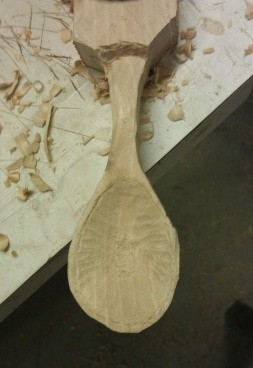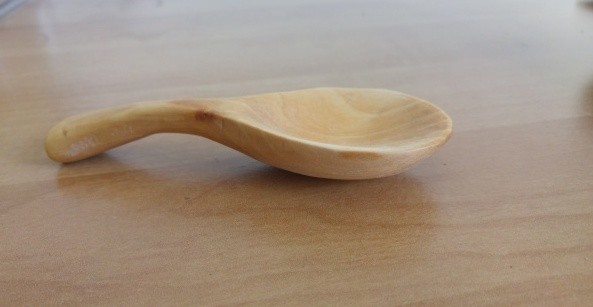Lirum Larum Löffelstil / trying my hands on spoon carving
Geschrieben in Alltag am 30.09.2016 von Eva-Maria
Anfang Jänner habe ich meine Komfortzone verlassen und mich an ein ganz andreres Material gewagt - Holz. Für jemanden wie mich, der gerne mit Fäden und Stoffen hantiert, war es unglaubliches Neuland, diesen Werkstoff in den Händen zu halten und dann auch noch zu bearbeiten. Jedenfalls habe ich mich an Holzschnitzarbeiten versucht und einen Löffel nach dem Vorbild des Fundes von Schloss Runkelstein, datiert auf das 15. Jhdt., gefertigt. Ohne passendes Löffelschnitzmesser ist es zwar mühselige Kleinarbeit, die Laffe zu formen, am Ende hat es dann aber geklappt. Dabei hab ich mich nicht einmal in den Finger geschnitten - ich bin so stolz auf mich!
Edit: Ich hatte die Gelegenheit, den Löffel bei der Belebung im Museum Tiroler Bauernhöfe, Kramsach im August zu testen - und es isst sich sehr gut aus ihm!
In January I left my comfort zone and tried a new - at least for me - material: wood. For someone like me that favors threads and fabrics it proved to be a unique experience as I had never worked with carving tools before. Anyway - I managed to make a small spoon based on an extant example found in Castel Roncolo, Italy, dated to the 15th century. I even did so without cutting myself - I am very proud of me!
Edit: I had the opportunity to use the spoon at the meals served during our demonstration of medieval rural life at the Museum of Tyrolean Farmhouses, Kramsach in August - and I must say, one can eat wonderfully out of it!

the backside of the spoon head - still very crude

the upper part came off more smoothly

carving is finished - now the spoon has to be sanded

The spoon is sanded, oiled and ready for use.

